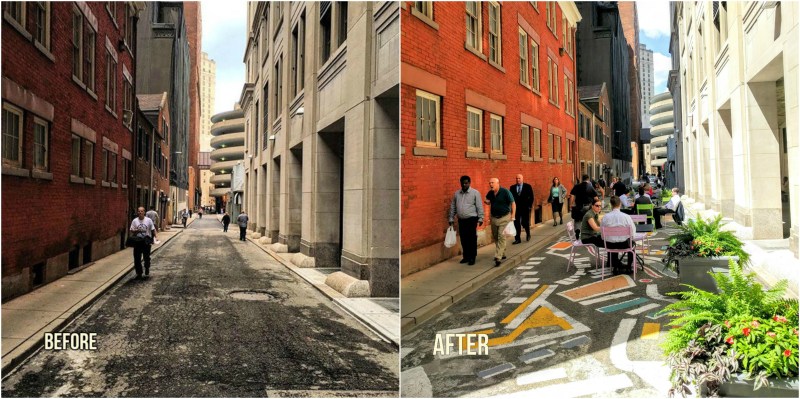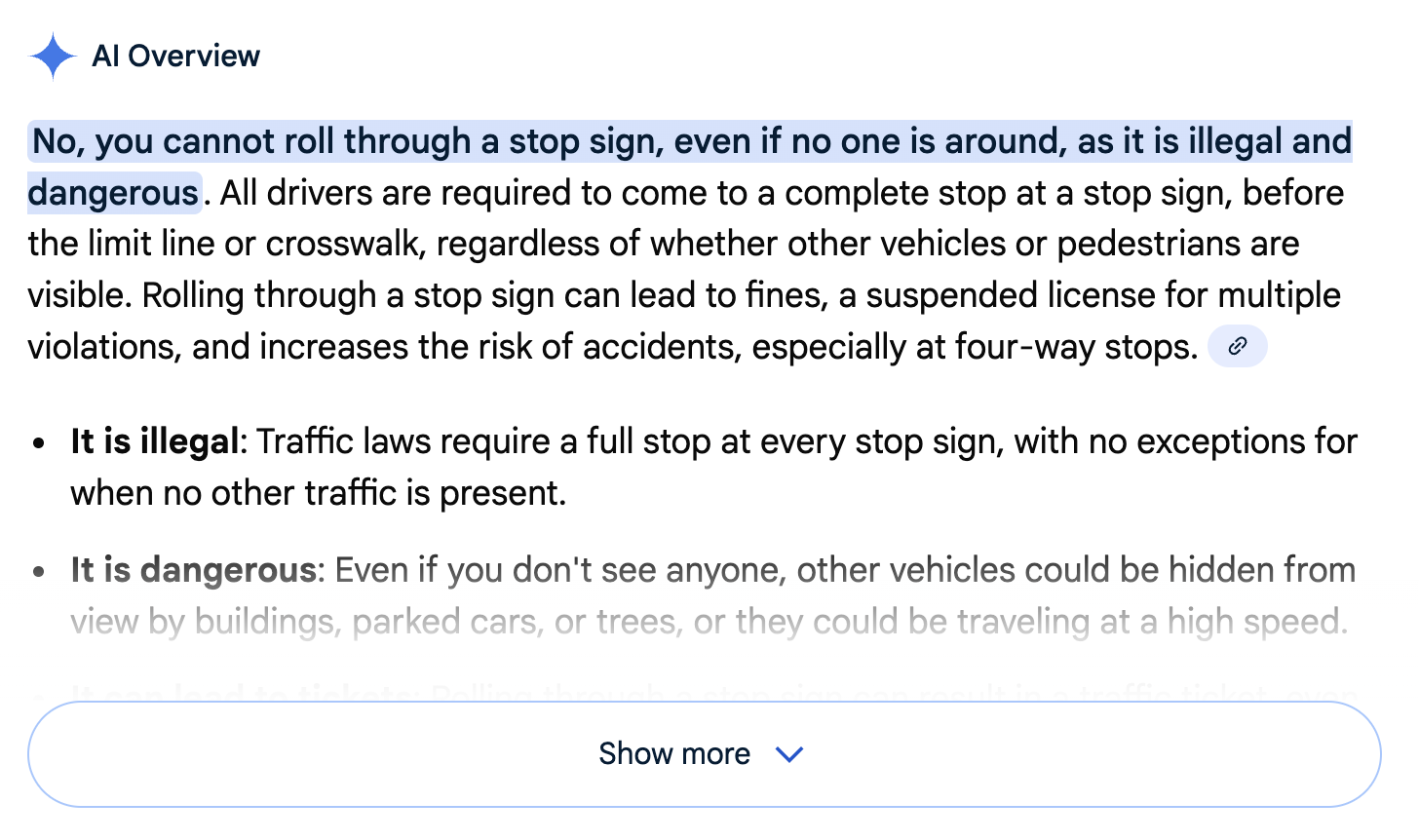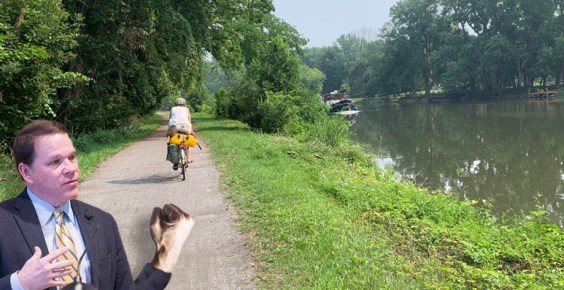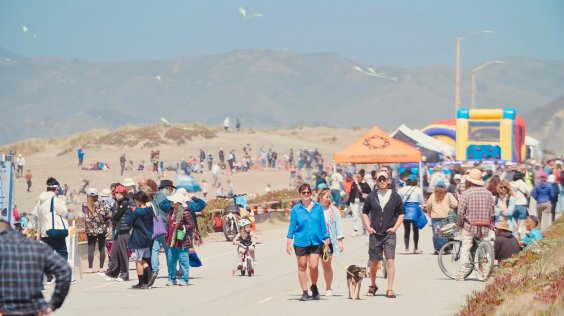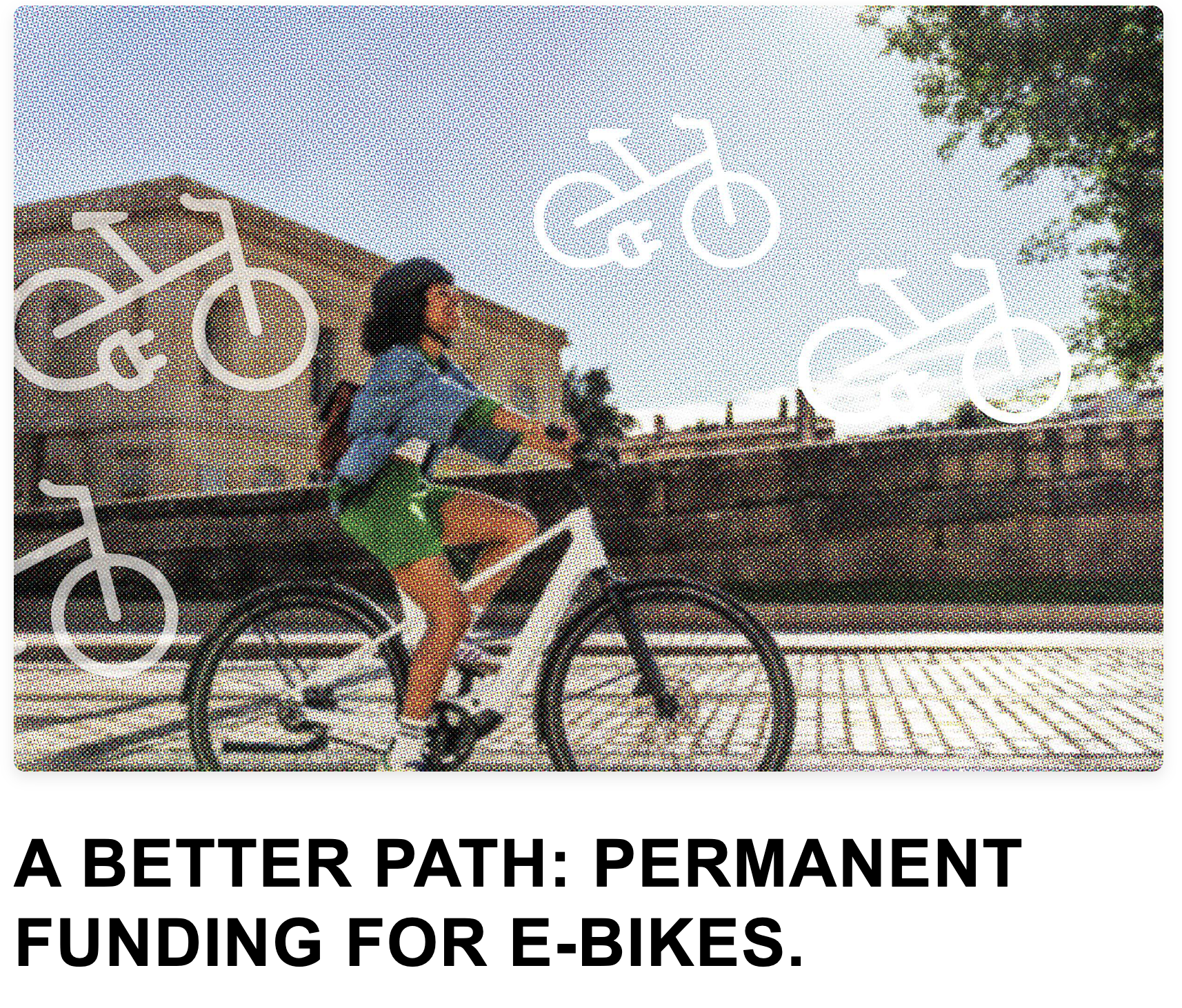Streetsblog asked our readers to send in their nominations for the best street redesigns of 2017, and they delivered this batch of six outstanding finalists.
Each of these six cities claimed a lot of space from cars to make streets work better for people. We've got two major transit-priority projects, three bike-friendly overhauls, and one downtown that prioritized pedestrians to create livelier public spaces. Before we settled on these finalists, we had to cut a few other worthy contenders, including Pittsburgh's Liberty Avenue bus lanes and Nashville's Nolensville Pike and Welshville Drive pedestrians improvements.
Take a look at your six nominees and vote below to decide which will be named the best street transformation of 2017.
Albuquerque: Central Avenue
Albuquerque held a kickoff ceremony for this nine-mile bus rapid transit project late last month, after nearly a decade of planning and a lot of political jousting.
Bus riders on Albuquerque's main drag speed along in center-running transit lanes, with a fast boarding process thanks to off-board payment and sheltered waiting areas that are level with the floor of the bus. Frequent service will begin next year.
The city also revised its zoning code to support transit-oriented development along the line. Mayor Richard Berry, a Republican, lead the project through some heated political battles, including a pair of lawsuits, and ultimately succeeded.
Here's another shot from the mayor:
Central Avenue carries 42 percent of Albuquerque's transit trips, about 15,000 daily. The hope is that this project will not only boost those numbers but provide the city with a walkable spine to guide future growth and development.
The Institute for Transportation and Development Policy awarded the busway design "Gold Level" status -- the highest ever issued for an American BRT project.
Cleveland: Detroit-Superior Bridge
We've been hard on some of Cleveland's previous bike planning efforts. But this year, the city showed it can do bike infrastructure well. Cleveland converted a whole outer lane of its Detroit Superior Bridge -- which was a nightmare for cyclists -- into a bright green protected bike lane.
The project was collaborative, including significant help from the regional planning agency, NOACA, as well as Ohio DOT. It demonstrates a clear evolution at all three agencies.
Bike Cleveland says that prior to this project, the bridge was consistently reported to be one of the most dangerous places to bike in the city. The bridge still has some drawbacks -- only one side is protected, and it still deposits cyclists into some extremely intimidating intersections. But those locations will eventually include bike signals -- another Cleveland first.
Toronto: King Street
We can't give Toronto enough credit for showing how simple it can be to improve transit service with its King Street project. The trick is to get cars out of the way.
The one-year pilot project made King Street, with its 65,000 streetcar trips, a much faster street for transit by limiting cars to local access only. Using inexpensive low-cost materials, the city was able to dramatically improve streetcar travel times for only $1.5 million.
Streetcar trips were maddeningly slow when transit riders were bogged down in private car traffic. But when the pilot launched a few weeks ago, it immediately shaved five to 13 minutes off streetcar journeys along the 1.6-mile stretch. The reception from riders has been overwhelmingly positive, and the Toronto Star has already insisted the changes should be made permanent.
St. Paul: Jackson Street
St. Paul built this sidewalk-level, all-ages bike path through its downtown on Jackson Street. It goes right past the Minnesota state capitol.
The nine-block path is part of St. Paul's Capital City Bikeway, a system of on-street bike lanes that connect to off-street trails. The $16.5 million project involved significant construction, including utility relocation.
Austin: 3rd Street
Austin completed another inspiring bike project on 3rd Street. The red bike lane is protected by curbs and parking.
This project is the final link in a contiguous, five-mile "all ages" bike route through downtown Austin. It's the type of street improvement that has helped Austin make tremendous progress in improving bike safety over the last few years.
Halifax: Argyle and Grafton
Halifax, Nova Scotia, made the final with the transformation of two downtown commercial streets into streets that prioritize pedestrians over motor vehicles. These blocks now have no curbs, improving accessibility and allowing people to use the entirety of the street. Motor vehicles are allowed, but drivers have to go carefully and proceed at a walking pace.
This is a crowded downtown commercial area, and the new freedom of movement for people on foot should make it even more of a draw. An explanatory video from the city, however, does say that pedestrians are still expected to yield to drivers.
The project involved a complete resurfacing with "argyle" stones. All on-street parking was removed to give businesses bigger patio spaces. The streets operate as a public plaza.
Which project deserves the Streetsie? Cast your vote below -- the polls are open until December 26.
